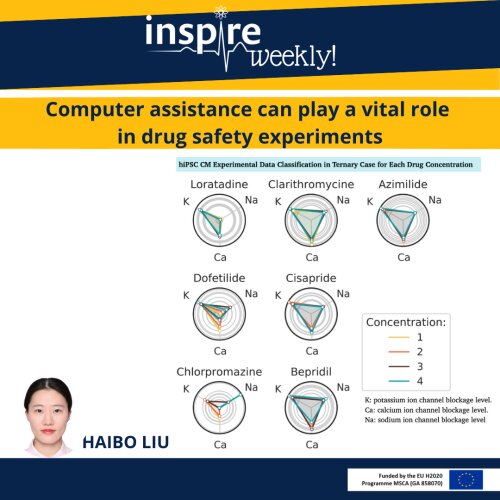23/02/2022 - Haibo (ESR #3)

This flyer shows the promise of computer-assisted predictive analytics in cardiovascular safety evaluation. Predictive analytics models are designed to discover patterns in historical data, observe trends and use that information to make a prediction on new data. In drug development and safety evaluation studies, researchers usually need to analysis a large amount of data (“big data”) generated by these experiments. For example, the field potentials (FP) recordings of hiPSC-CMs obtained by multi-electrodes arrays (MEA) technology can offer researchers hours of recordings (each data point can be one millisecond) from a large number of electrodes. So, handling this “big data” and make analysis become challenging. Predictive analytics models help the researchers to improve the efficiency and set up drug high-throughput screening procedures.
As part of my PhD project, I will investigate the usage of classification models like statistical and machine learning based models for drug safety testing. We have started using the classification model to answer questions like: can we reliably infer the impact of a new drug compound on the potassium channels of cardiomyocytes? After proper training and validation, the model automatically detects patterns of the normal state and changes induced by drug in electrical signals. A well-trained classification model and associated visualisation dashboard could significantly improve the speed of drug toxicity study.
References:
- F. Raphel, T. De Korte, D. Lombardi, S. Braam, J.F. Gerbeau, “A greedy classifier optimization strategy to assess ion channel blocking activity and pro-arrhythmia in hiPSC-cardiomyocytes,” PLoS Computational Biology, vol. 16, no. 9, pp. e1008203, Sep, 2020. DOI: 10.1371/jour- nal.pcbi.1008203